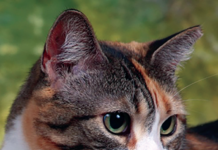Cats were kept as companions and prized as vermin-catchers in Ancient Egypt, the Middle East, India, China, and much later, in Europe. In North America, random-bred or shelter cats are believed to be descendants of cats introduced by early settlers from Europe. In the late 1800s, the concept of individual breeds was born out of peoples pride in their feline companions.
Cat lovers held exhibitions to display their cats; standards were developed to guide breeders in what their breed should look like, and pedigrees were created as a means of tracking a cats ancestry. Today, breeder members of the various cat registries determine the breed standards based on many characteristics, like body type and head shape, coat and eyes.
Papers Make the Difference
The variety of cats on exhibit at a show is wondrous. The shapes and sizes, different coats and colors all add up to the enjoyment of attending a cat show. Visitors often discover that the cat they have at home is considered a look alike of a particular breed rather than the actual named breed – unless they have the pedigree. My Maine Coon looks just like yours! theyll say. When asked about the cattery the cat came from, theyll often answer, I got him from the shelter.
Unless the cat was abandoned with his papers attached, or brought to the shelter with his pedigree, he cannot be identified as a breed.
Another visitor may explain, I know shes a British Shorthair. My veterinarian told me. However, not even a veterinarian can determine a breed by simply looking at the cat. You cannot tell a breed by color, pattern, fur length, ear set, body type or personality. The only way you really know if a cat is a purebred is if you have a pedigree, says James Richards, DVM, director of the Cornell Feline Health Center.
People often mistakenly identify their cat as a particular breed by coat, pattern or color – but not every shorthaired cat with color points is a Siamese nor every tailless cat a Manx. A tabby is not a breed but a pattern, and there are four types of tabbies: classic or blotched (swirls), mackerel (tiger stripes), spotted (broken mackerel) and ticked tabby or Abyssinian. Tiger, calico, marmalade cat, ginger cat, tortoiseshell, tuxedo and magpie cats are not breeds, either. These refer to colors and patterns.
Registries Determine Breeds
So how exactly do you define a breed? It depends on what registry or association youre dealing with. Virtually every country has at least one registry, an organization that recognizes breeds and maintains the records (pedigrees) of the cats in that breed.
Some breeds are recognized in one association and not in another; for instance, some breeds that are recognized in the United States are not recognized in Europe.
In different countries there are different rules, says John McGonagle, co-author of Robinsons Genetics for Cat Breeders and Veterinarians. A particular breed thats bred in Britain might or might not be accepted as that same breed in the United States. There are many breeds commonly recognized throughout the world, but what actually identifies a cat as a particular breed is the pedigree – the fact that it is registered and has traceable lineage.
The Cat Fanciers Association (CFA), the worlds largest registry of pedigreed cats, defines it as such: A breed is a group of domestic cats (subspecies Felis catus) that the governing body of CFA has agreed to recognize as such. A breed must have distinguishing features that set it apart from all other breeds.
Currently, 40 breeds are recognized by CFA. New breeds are created through selective breeding and gene mutation. What constitutes an actual new breed – rather than a variety of an existing breed, a genetic anomaly or someones fantasy – is generally open to considerable debate and discussion. Its political and emotional when you start talking about breeds, even the definition of a breed, says McGonagle. It is just not as cut and dried as we would like it to be.



